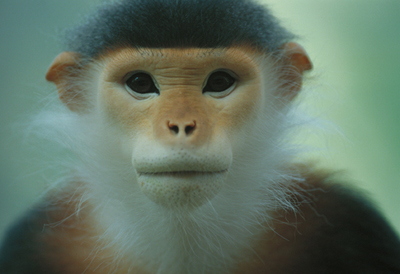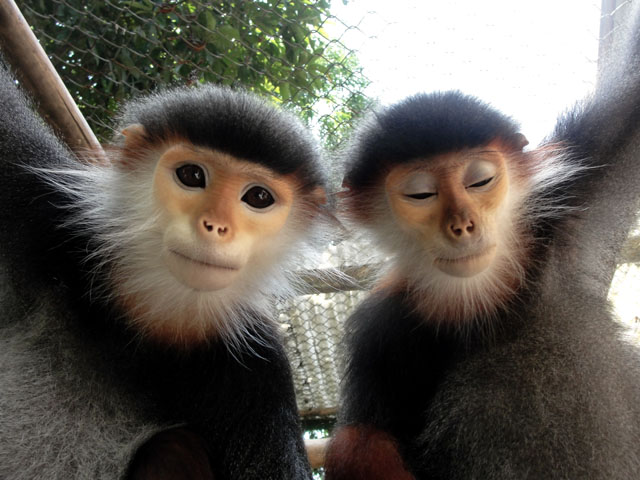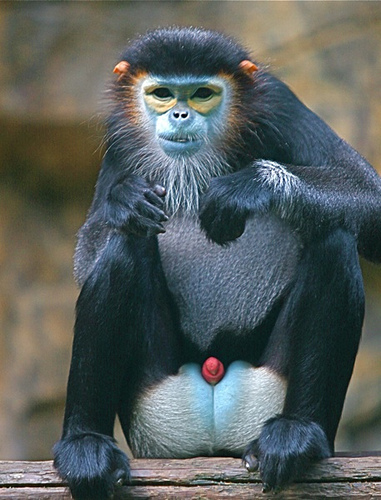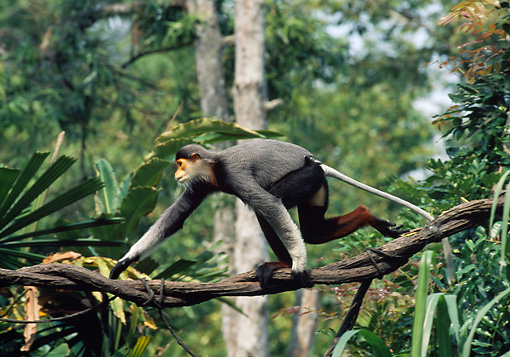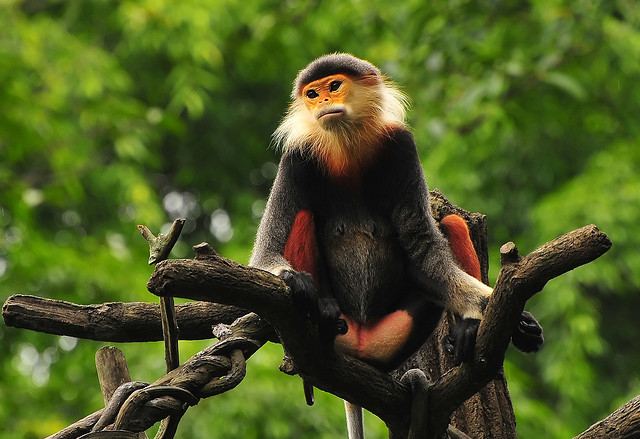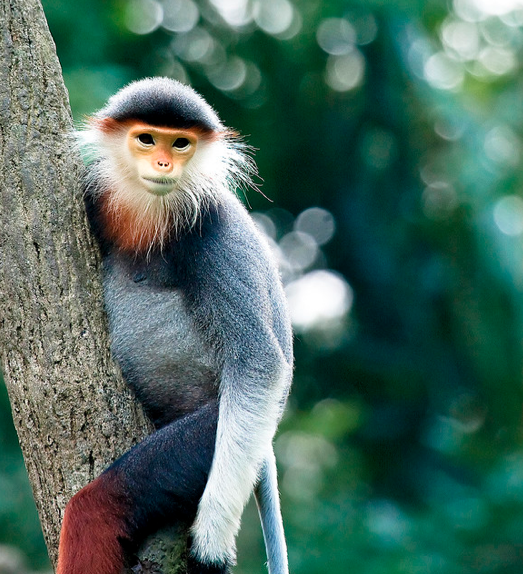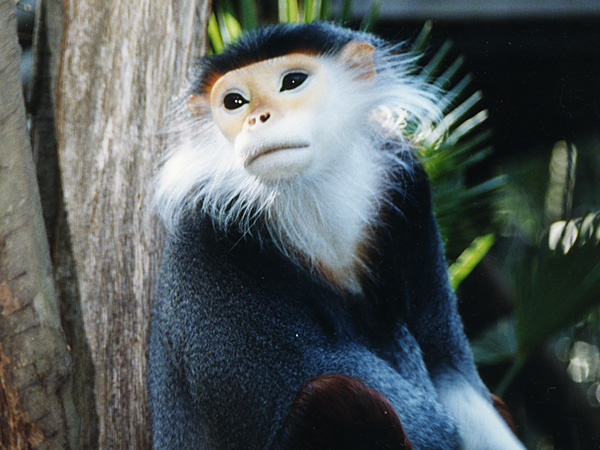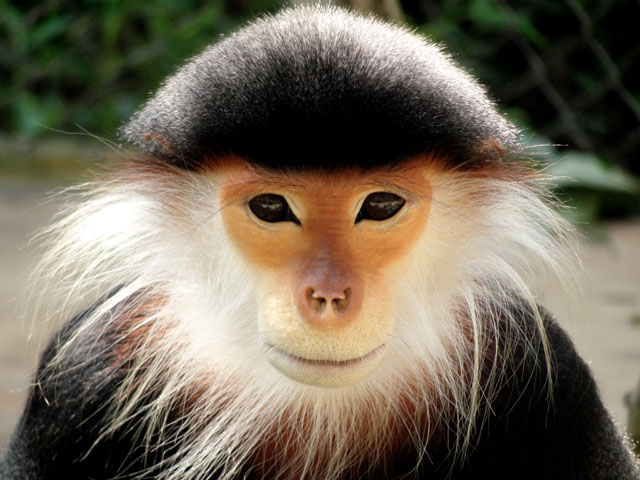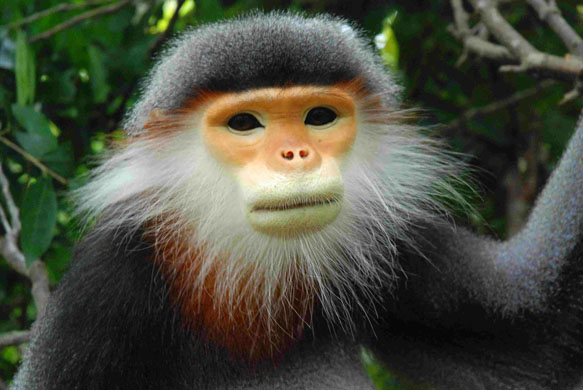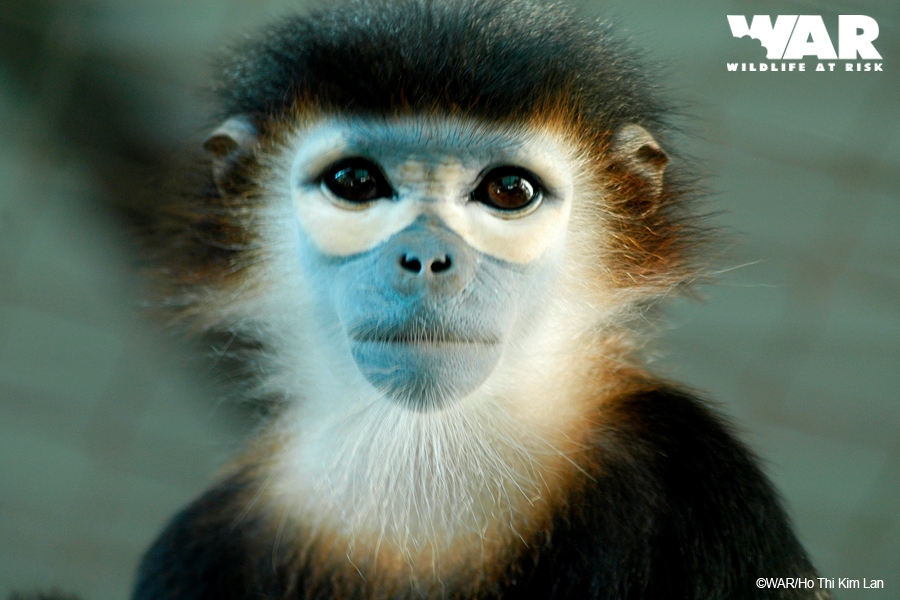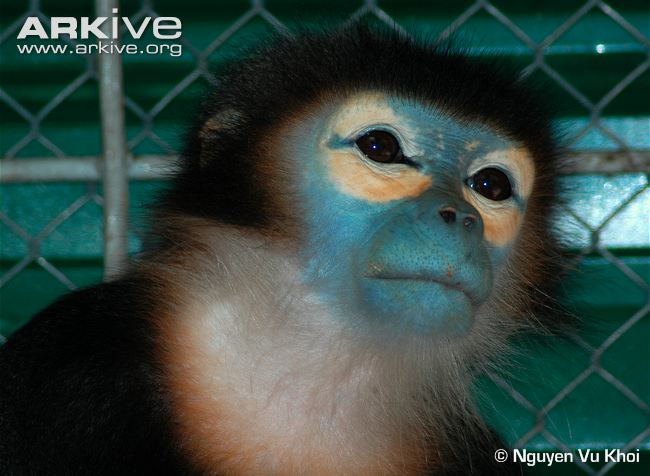Douc Langers: Rare Primate Space Wizards
Douc Langers, or just doucs to their friends consist of three species of the genus Pygathrix. They are Southeast Asian Old World monkeys and all of them look incredible. The three douc species are as follows: red-shanked, black-shanked and gray-shanked, they are all magnificent.
They’ve got this penetratingly wise stare. I’m 50% convinced they are ancient aliens. Not really… well… maybe? Look:
Unusually for primates the doucs have four-chambered guts for digesting plant matter, like a cow. Their foreguts have bacteria present which break down the polysaccharides in the cellulose so it can be readily digested. Doucs can eat up to 20% of their body weight in one sitting so they often have a bloated appearance.
This ruminating means that they spend a lot of time just sitting about and letting their guts do the work, it also means that they are well documented and prolific belchers.
One study found that wild black-shanked doucs spent 62% of their days resting. Because of this douc langers have a pretty calm existence with a high percentage of chilling out. Well, they did until humans came along any way. Now they’re one of the most endangered primates on earth.
The douc langer’s response to hunters is to sit motionless in the canopy, this goes against them unfortunately. A sitting primate is a sitting duck for a human hunter. Humans use the creatures for food and for traditional medicine (e.g. “monkey balm”). They also make good cash on the black market as pets.
Douc langers live in Laos, Vietnam and Cambodia and thanks to loss of habitat through cultivation and logging they’re struggling to get by these days. Vietnam has lost 80% of its historic forest cover already.
During the Vietnam War (1963-1975) over 72 million liters of herbicide were sprayed and approximately 22,000 sq acres of agricultural land and forests destroyed. Across the three countries the douc langer’s population is estimated to have dropped by 50-80% over the last 30 years.
Douc langers eat a wide variety of leaves, fruits and seeds, preferentially going for young leaves. It eats noisily and with wanton abandon, dropping food to the forest floor willy nilly. Unlike other Old World monkeys the doucs seem to have a generous streak, they never squabble over dinner and are even seen sharing.
It’s important not to anthropomorphise when reading about or watching animals, but it’s pretty difficult when you’re looking at a species with so many similarities to yourself. The douc langers seem to be sensitive souls, one male douc who lost his partner was recorded “mournfully howling” for several days. Another human trait I found, expressed in the least emotional terminology: “Panic diarrhea common”.
I know I’m being a little bit daft here, but they sort of look like wise-futuristic-space-wizards to me? Am I wrong?
MORE INCREDIBLE NATURE:
COLUGO: INCREDIBLE FLYING LEMUR
HALF MALE / HALF FEMALE ANIMALS

